artworks, artists and exclusive offers. Sign up now
[INTERVIEW] Interview with USHIJIMA KO
February 26, 2021
By Ahyoung Lee

Ushijima Ko, 181230-1, Sumi ink, mineral pigment, silver powder, silver leaf on handmade paper mounted on wood panel. 84.8x60.0cm, 2018
Hi, Ushijima. Can you introduce yourself to the Art Terms Magazine readers?
Hello. My name is Ko Ushijima and I am a painter based in Kanazawa, Japan.
I am honored to have my work introduced to the Art Terms Magazine.
こんにちは。日本の金沢を拠点に絵の制作をしている牛島孝です。今回は私の作品をthe Art Termsにご紹介いただき、光栄です。
Can you tell us about the process of making your work?
I work on two
different types of process. One is a tableau, which I draw on gold or silver
foil. The other is a drawing, which I draw on paper using ink or pencil. In
both cases, I do not make a rough sketch but improvise when I’m working on my
artworks. I want to value the tension that this creates. In addition, I
repeatedly erase as much as I draw. Particularly in tableau, the image drawn on
the foil can be erased by rubbing it with hot water. My process is to get to
the essence of expression by subtracting rather than adding.
私の作品は大きく分けて二種類あります。一つは金や銀の箔を全面に貼った上に描くタブロー、もう一つは紙の上に墨や鉛筆などを使って描くドローイングです。
どちらも下書きはせず、即興的に描いていきます。そのことによって生まれる緊張感を大切にしたいのです。
また、描くことと同じぐらい、消すことを繰り返します。特にタブローでは箔の上に描いたイメージはお湯をかけてこすることで消すことができるのです。
足すのではなく、引くことで表現の本質に迫るのが、私の制作プロセスです。
![무제-2-[복구됨].png](/adm/data/webedit/20210226182017895094899.png)
Is there a reason why you explore the concept of possibility
to express modernity in classic Japanese art?
First of all, I
like classical Japanese paintings and inspired by them a lot. As I live in the
modern world, it is very natural for me to want to take over and follow the
history. In addition, from the middle of the 19th century, Japanese art took a
major turn toward westernization.
In recent years,
however, artists such as Takashi Murakami have developed the concept of anime
and manga culture as high art, which is wonderful in itself. However, Japanese
culture is not only about that, but also still and deep, such as Zen philosophy.
I want to be an artist who paints purely from the perspective of such still and
deep art history.
まず第一に、私は古典的な日本の絵画が好きで、多くのインスパイアを受けています。その上で、現代に生活している私がその歴史の流れを引き継ぎ踏襲していきたいとするのは非常に自然な流れではないでしょうか。また、日本の美術は19世紀なかばから、西洋化に大きく舵を切りました。戦後そうした流れはより顕著になり、ほとんど自我を失っている状態が続きましたが、近年になり、村上隆を始めとしたアーティストによってアニメ・漫画の文化をハイアートとするコンセプトの構築など、様々な流れがあり、それ自体は素晴らしいことなのですが、日本の文化はそれだけではなく、禅の思想のように、より静かで深いものもあります。純粋に絵画で、そうした静かな美術史を踏まえて描いているアーティストとして在りたいのです。
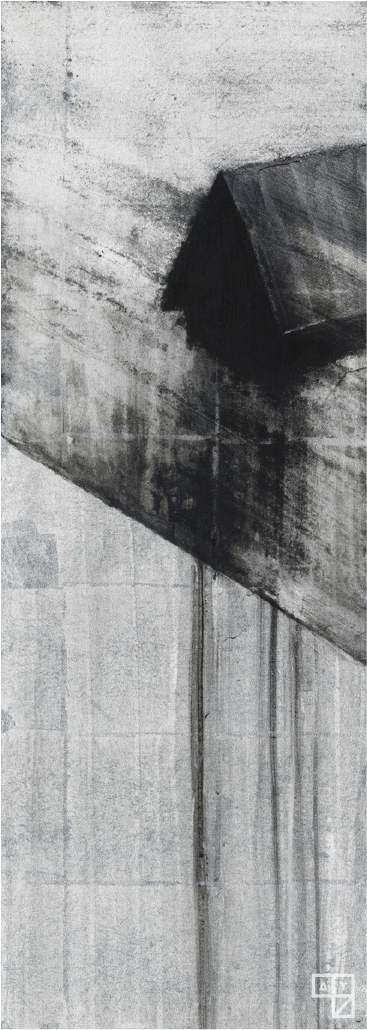
Ushijima Ko, 140805-1, Sumi ink, mineral pigment, silver leaf on handmade paper mounted on wood panel, 84.8×30.0 cm, 2014
Tell us more details about the process and reason of
making traditional handmade Japanese paper for your artwork.
Before I used the
tableau use of metal foil, I drew only on watercolor paper and used
non-traditional materials which can be found anywhere such as pencils and oil
pastels. One time, I had an opportunity to show these drawings at a European
art fair, but the response was not positive. I thought of the reason why
European viewers couldn't understand my work, and found out that people
understood the Yohaku (a blank space in Japanese) as an unpainted area. Yohaku
is one of the important elements in my work. I wanted to somehow draw the
viewer's attention to the blank space, so I began to use foil as a base. Since
foil glitters and shines, it serves an effective guide directing the viewer's
attention to the blank space, and washi paper is the easiest substrate to use
for applying foil.
As I sometimes
use industrially produced silver paper, I don't necessarily think that
traditional materials must be used in my work. However, when the traditional
materials are used well, they not only accurately express my intentions, but
also creates an attractive expression that goes beyond my intentions.
Traditional materials have the capacity to encompass such expressions. This may
be natural, considering that they have been used and refined over the past 1000
years.
タブローは金属箔を使用していますが、そうした作品を製作する前は、水彩紙にドローイング作品ばかり描いていました。使用している画材も、鉛筆や、オイルパステルといった、どこにでもある画材で伝統素材ではないものです。あるとき、そうしたドローイング作品がヨーロッパのアートフェアに展示さる機会があったのですが、その時は反応があまりよく有りませんでした。
私の作品の重要な要素の一つに余白があります。韓国の方なら感覚的にそうした表現は理解できると思いますが、ヨーロッパではただの塗り残し、描いていない部分としか理解してもらえなかったことが不評の一つの原因ではないかと考えました。どうにかして余白の部分に鑑賞者の意識を向けさせたいという思いから、下地に箔を使うようになりました。箔はキラキラと輝きますので、鑑賞者の意識を余白に向けるのに効果的な道標の役割をしてくれます。
そして、箔を貼るための下地は和紙が一番使いやすいのです。
制作する上で絶対に伝統的な素材でなくてはならないと考えているわけでは有りません。
ドローイングでは、アルミニウムを蒸着させた印刷用の銀紙を使うこともあります。
ただ、そうした素材は一度描いたものを消すことができません。
伝統的な紙や画材は、うまく使うことができれば私の意図する表現を正確に画面に表すだけではなく、そうした意図を超えた魅力のある表現を作り出してくれることがあります。
そうした表現を包み込むような懐の深さが伝統素材にはあります。過去1000年以上使われてきて、洗練されてきたもので有ることを考えれば、当たり前のことかもしれません。

Do you have a reason for using wooden/aluminum panel
instead of the canvas?
Aluminum panels
are very special in my work as well, but I'll explain details about using
wooden panels today. Washi paper expands and contracts hugely depending on
humidity; hence, a wooden frame like a canvas is not suitable for fixing
Japanese paper. To add some more information, the wooden panel and the artwork
are not attached with glue or anything like that. They are just fixed on the
back of the panel which means that the work can easily be removed whenever you
want. This is a huge advantage of allowing the work to be displayed in
different forms to suit the exhibition venue as a hanging scroll. Also, it
makes it easier for the future when restoration is needed.
アルミのパネルは私の作品の中では非常に特殊なものなので、木のパネルについて説明をします。
和紙は湿気によって大きく伸び縮みするので、キャンバスのような木枠は和紙を固定するには不向きです。また、この木のパネルと作品は、糊などで貼り付けてあるわけではなく、パネルの裏面で止めてあるだけです。つまり、作品は剥がそうと思えばかんたんに剥がすことができます。
そのことで、展示する会場に合わせて別の形(例えば掛け軸)で展示することや、将来修復が必要な場合に作業しやすくなるメリットがあります。
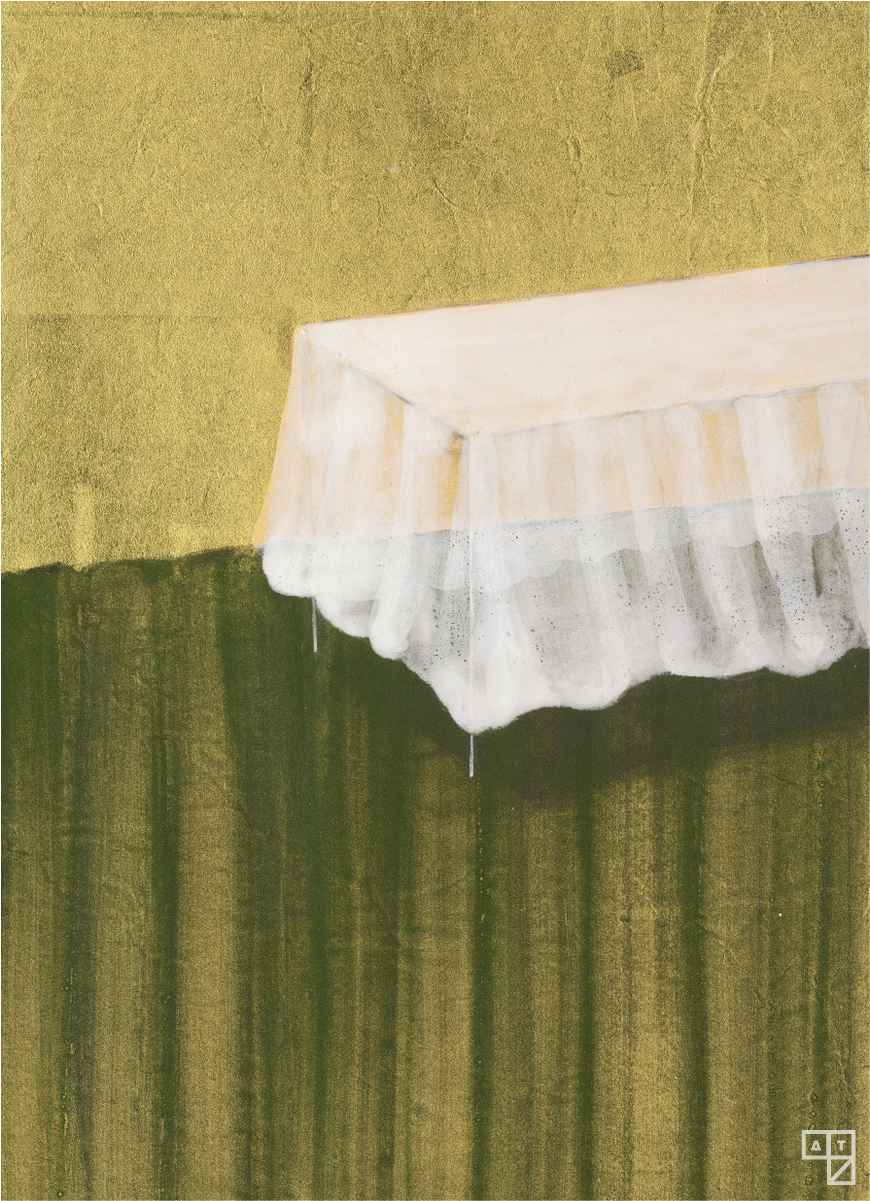
In the earlier artworks, various colors were used. Is there a reason why you use less colors in your recent artworks?
In the process of removing unnecessary elements and improving the purity of expression, colors were one of the elements that I used less in my artworks.
できるだけ余計な要素を取り除き表現の純度を高めるプロセスのなかで、色彩も削られていきました。
What would you say is the strength of using traditional Japanese technique?
Carrying on the tradition can add an element of the past history to my work as Michaël Borremans is recognized today for using the same techniques of Chardin and Velázquez. In the same way, I can add a depth of history to my works.
テクニックを含めて伝統を引き継ぐことは、作品に過去の歴史という要素を盛り込むことができます。シャルダンやベラスケスと同じ技法を使うことで現代のミヒャエル・ボレマンスが評価されているのと同じように、作品に歴史の厚みを加えることができるのです。
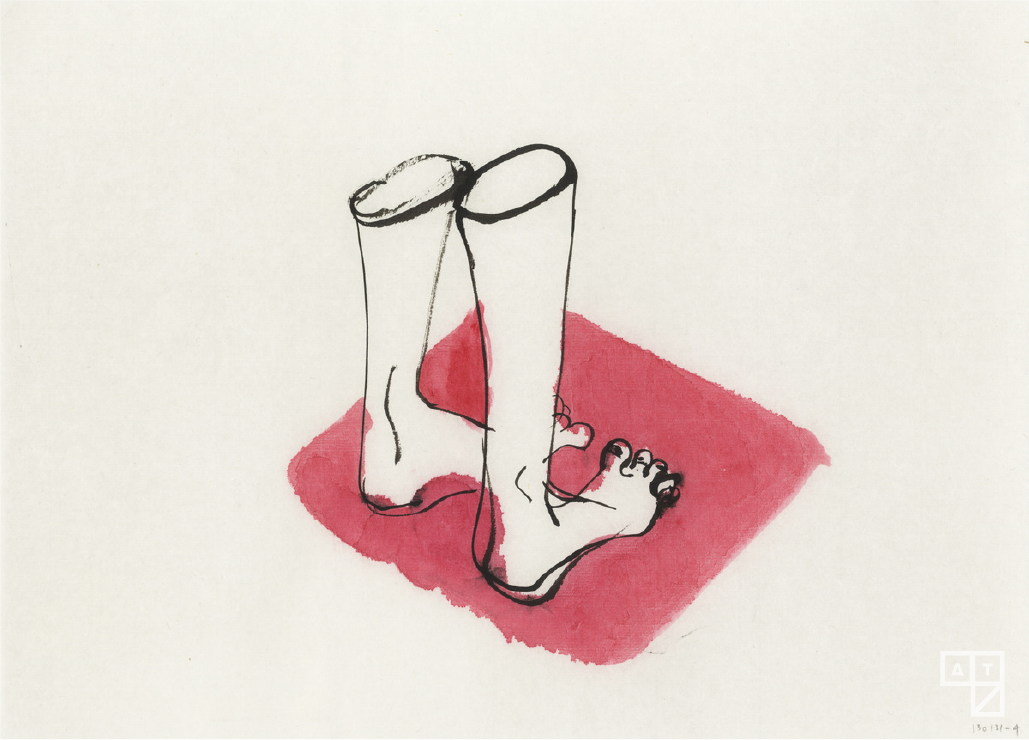
Where do you get inspirations from?
As I am inspired
by the past history of art, I am also inspired by Noh theater and music. Noh
theater has been around since the 14th century. In music, I like to listen to
Korean gayageum (가야금). I really like the silent pause in music
過去の美術作品と同時に、能という14世紀から続く演劇や、音楽にもインスピレーションを得ています。韓国の伽耶琴(가야금)も好きでよく聞いています。間のとり方が好きです。
What was a pivotal moment when you decided to be an
artist?
In the 1990s, the city was very active in
contemporary art, and there were many contemporary art galleries that held many
wonderful exhibitions. I was so fascinated by the art I experienced there that
I decided to become an artist.
Ann Hamilton's beautiful installation
works are still in my mind and I recall them from time to time.
瞬間ではありませんが、10代のころ名古屋という街に住んでいました。1990年代その街はとても現代美術が盛んで、多くの現代美術のギャラリーがあり、素晴らしい展覧会を多く開催していました。
そこで実際に体感したアートの魅力に強く惹かれたのが、アーティストになることを決意したきっかけです。アン・ハミルトンのインスタレーション作品など、いまでも脳裏にこびりついていて時々思い出します。
![무제-2-[복구됨].png](/adm/data/webedit/202102261756281856226315.png)
Was there a moment that you regretted being an artist? If there was, please tell us about it.
Not particularly. It's a
blessing to be able to think that way.
特にないです。そう思えることは幸せなことですね。
What is it
like to be an artist in Japan?
My works are mainly sold outside of Japan. The art market in Japan is small and it is quite difficult to become an artist.
日本はマーケットが小さく、アーティストになるのはかなり難しいです。私も販売は日本以外が主です。

Can you tell us about your university life in Kanazawa
College of Art?
Kanazawa College
of Art is an art college that specializes in crafts. The entire city of
Kanazawa has a thriving craft scene, and many craftsmen live in the city. In
recent years, the 21st Century Museum of Contemporary Art, Kanazawa, has been
established and contemporary art has started to gain the momentum.
Kanazawa College
of Artは工芸に特化した芸術大学です。金沢の街全体が工芸が盛んで、作家が多く住んでいる街です。近年、金沢21世紀美術館ができて、現代美術も盛り上がってきています。
Can you share with us the moment when you received the
"Shell art award 2007" kunio Motoe prize and 2003 "HB file
competition 2004" Grandpix soeda (takayuki prize) ?
At the time, I was overwhelmed with the
closed art world, and was looking for a way to expose my work in socially
exposed media. By winning the Grand Prix in this competition, my work was used
on a cover of a book. It gave me the opportunity to expose to people who
usually don't visit galleries, and I still continue to do this kind of work.
当時私は、美術の閉じた世界に嫌気が指し、もっと社会に露出したメディアに作品イメージを使ってもらえないか、検討していました。このコンペティションでグランプリをもらえたことで、本の表紙に作品を使ってもらえて、普段ギャラリーに来ない方にも作品を知ってもらえる機会をいただけました。こうした仕事は細々とですが、今でも続けています。
![무제-2-[복구됨].png](/adm/data/webedit/202102261818502079185017.png)
Installation view, Galleria Ponte, Kanazawa, Japan, 2019
18.4K followers are following your account on Instagram. Why do you think
your work is loved so much by many people?
I think people love my work since I demonstrate expressions in my own
unique way. In today's world, so many expressions out there, and originality is
the most important thing now.
私にしかできない表現を見せることができているからだと思います。表現が溢れている、現代において、オリジナリティは一番大切です。
How does social media affect you and the art world?
As an artist, it
is the greatest pleasure to have my work seen and appreciated by many people. I
think social media is positive for artists since it has made exposure and
promotion easier than before. But at the same time, I fear that people will be
satisfied with the information they get from their smartphone screens and stop
looking at the actual works. I'm worried that they will lose their sensitivity
to what they perceive from the experience of seeing the real thing.
多くの人に作品を見て評価してもらえることは、表現者として一番の喜びです。
インスタグラムのようなSNSツールがあることで、そのことがより容易になったことは、作家にとってプラスだと思いますが、同時に、スマートフォンの画面からの情報だけで満足して実物の作品を見るということの減少、そうして得た体験から自分が何を感じ取るかといった感受性の低下を危惧しています。
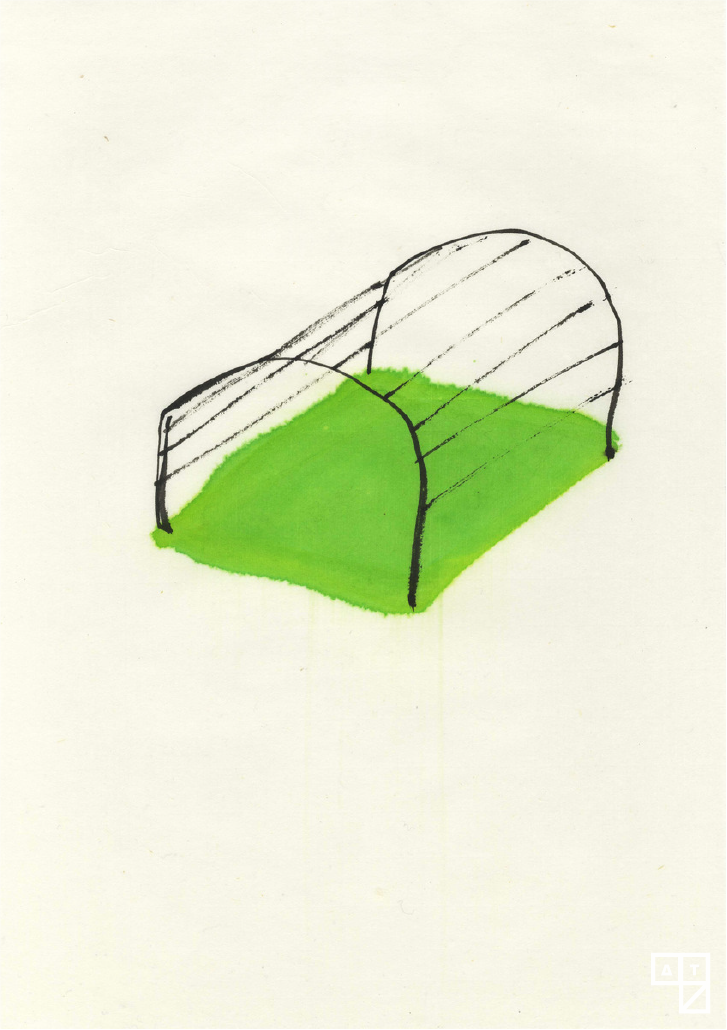
It seems that you have another Instagram account for
small drawings. How is it different from your personal artworks?
In the process of cutting down the elements, there are many attractive expressions that are removed. The small size drawings are mainly formed with rough expressions. They are rough, but have the potential to lead to the next step. For this reason, I decided to have separate accounts for them and keep it as an experimental place.
要素を削り取る制作プロセスのなかで、取り除かれてしまうけれども魅力ある表現も多くあります。それらは荒削りながら、次につながる可能性を秘めています。
小さなサイズのドローイングは主にそのようなラフな表現をしています。そのため、アカウントも分けて管理することにしました。
What topic or subject are you interested in recently? It can be any music,
artist, book, social issues or any topics.
I'm interested in cultural anthropology and have been reading a lot about it
for a long time. With the recent COVID-19, I am also interested in the role of
infectious disease in human history. Even in the current confusing situation, I'd
like to keep a micro perspective as well as a macro perspective in order to
make decisions.
文化人類学が好きで以前から良く本を読んでいるのですが、最近のコロナウイルスを受け、そうした人類の歴史における、感染症の役割に興味があります。
現在のような混乱した状況でも、ミクロの視点と同時に、常にマクロな数万年単位の大きな視点を持ち合わせ、物事を判断していきたいと思っています。

Ushijima Ko's studio view
If you can get a magic to trace another artist’s
style, who would it be?
Mokkei. He was a
Chinese painting monk in the late 13th century and had a great influence on
Japanese art. I hope I can trace the essence of that source.
牧谿 13世紀後半の中国の画僧で、日本の美術に大きな影響を与えました。その源流のエッセンスをトレースできたらいいですね。
Describe us about your studio in one word.
Polishing place
How do you want to be remembered as after your death
in the future?
An artist who has
taken over the flow of Japanese art history and introduced it to the world
日本の美術史の流れを引き継ぎ、世界に紹介した作家として。

What
can we expect from your next works?
Please look forward to more unconstrained but also
deeply spiritual works.
より自由でなおかつ深い精神性のある作品をご期待ください
Thank you so much for taking the time for
the interview. Would you like to say something to the readers of Art Terms
Magazine?
I hope this will be a good opportunity for me and hope the readers will be interested in my work. I am excited to see how my work and the interview will come out on Art Terms Magazine.
これを機に私の作品に少しでも興味を持っていただければ幸いです。
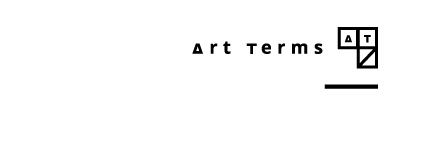
| Prev | [NEWS] In a First, Damien Hirst to Accept Cryptocurrency as Payment for New Prints |
|---|---|
| Next | [NEWS] Turkish Government Initiates New Attack On Arts Philanthropist Osman Kavala |
| List |